This final discussion of Eriogonum, or wild buckwheat, examines three beauties that are grown at the Master Gardener Demonstration Garden at Patrick Ranch: E. nudum; E. umbellatum; and E. grande var. rubescens (previous articles in this series have looked at E. giganteum and E. fasciculatum). 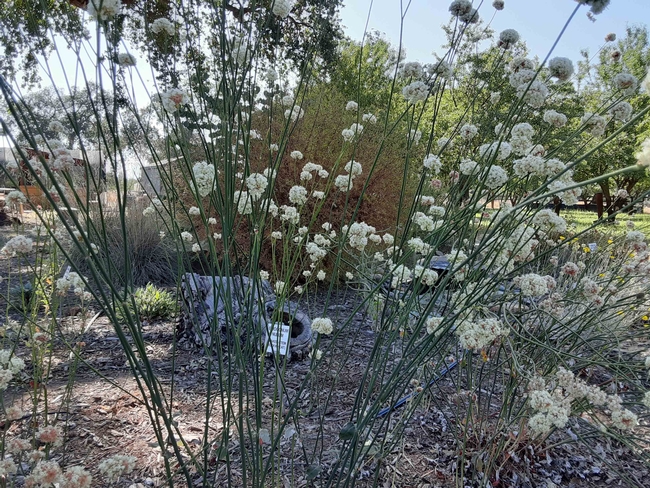
Species Focus – Eriogonum nudum
A progenitor of up to sixteen subspecies and variants, E. nudum is distributed widely throughout the western quadrant of North America, from Alberta and British Columbia in Canada down to the southern border of California and the eastern border of Nevada. Its ability to thrive along the coast at sea level and in wet conditions make it an outlier in the buckwheat realm.
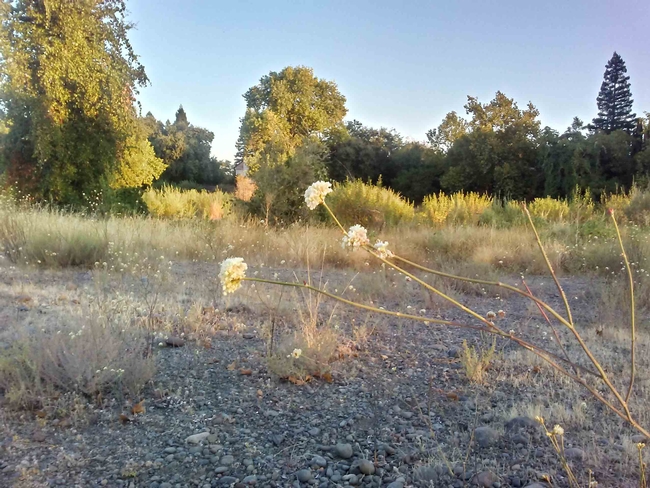
The stems and flowers can reach up to six feet high, but usually clock in at three to four feet. The entire display dies back in winter, to begin again the following spring.
The many common names of this plant include naked, nude, or barestem buckwheat, and naked-stemmed Eriogonum. Native American peoples found several uses for its hairless stems: the Karuk tribe of Siskiyou County and the Miwok tribe of California's Central Coast ate young, tender stems raw; while older stems were upended with the leaves still attached for use as brooms. The Kawaiisu peoples of southeastern California used the hollow stems as smoking pipes and drinking straws.
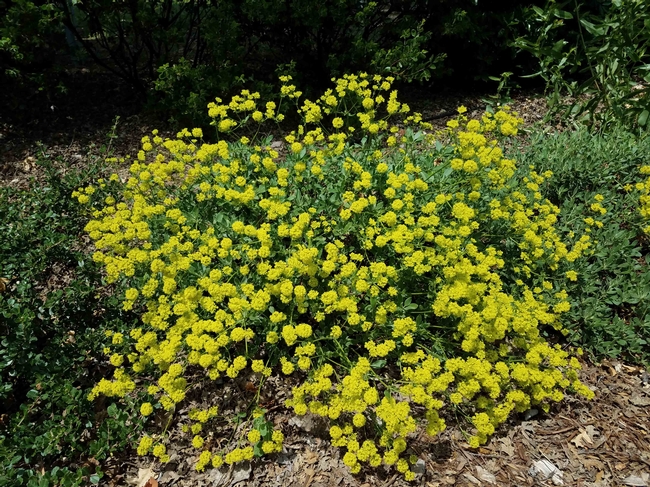
This species, best known as sulphur or sulphurflowered buckwheat, boasts even more subspecies and variants than E. nudum: up to forty! While most naked buckwheat species resemble one another, the numerous sulphurflowered buckwheat species appear in many guises: from a little perennial herb less than four inches tall to a rambling shrub six feet high and wide. Leaves can be wooly and hairy or smooth and bare. The flowers vary wildly too, ranging from white to purple, orange, and a bright (sulfurous) yellow.
Generally speaking, though, sulphurflowered buckwheat forms a low, broad mat from four inches to two feet tall and wide. The clusters of tiny flowers are borne on stems ranging from three to sixteen inches tall. According to the US Department of Agriculture's Plant Profile, “floral displays can color entire slopes starting in June at lower elevations and continue into September or October at higher elevations.”
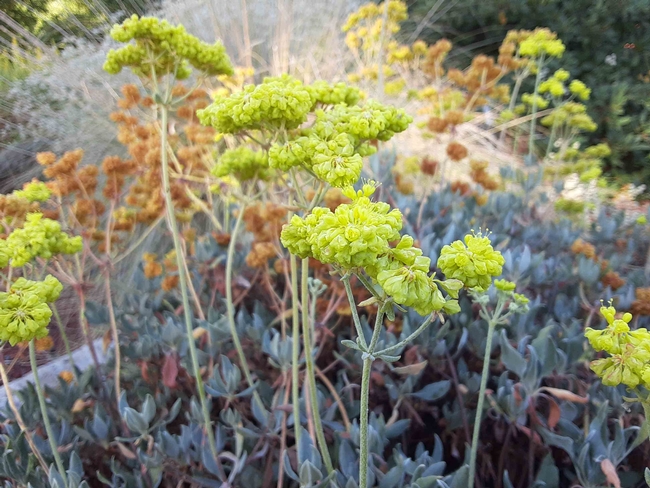
Sulphur buckwheats are native to the western mountains of North America, and are found in roughly the western third of Canada and the U.S., as far east as Colorado and New Mexico. They can live at elevations of up to 12,000 feet. As with other buckwheats, they are not only an important food source for bees and butterflies, but animals as large as deer and mountain sheep will browse their leaves.
Throughout the American and Canadian west, Native peoples found a number of medicinal uses for various parts of the sulphur buckwheat. Paiute and Shoshone tribes mashed leaves and roots into a poultice for both lameness and rheumatism, and drank a hot tea of simmered roots for colds or stomachaches. Closer to home, the Klamath Indians soothed burns with a poultice made of its leaves.
Species Focus – Eriogonum grande (var. rubescens)
A mere three subspecies belong to E. grande (Island or Redflower buckwheat), and all are native to California's Channel Islands. E. grande var. grande is found on several of the Channel Islands, and the very rare E. grande var. timorum is native to the southern Channel Island of St. Nicolas. The only one that is available horticulturally (according to Calscape) is the variety planted at the Master Gardener Demonstration Garden: E. grande var. rubescens. This buckwheat is commonly called red-flowered buckwheat or simply red buckwheat and is extensively planted in native gardens state-wide due to its beauty, compact form, and blooms that last up to seven months.
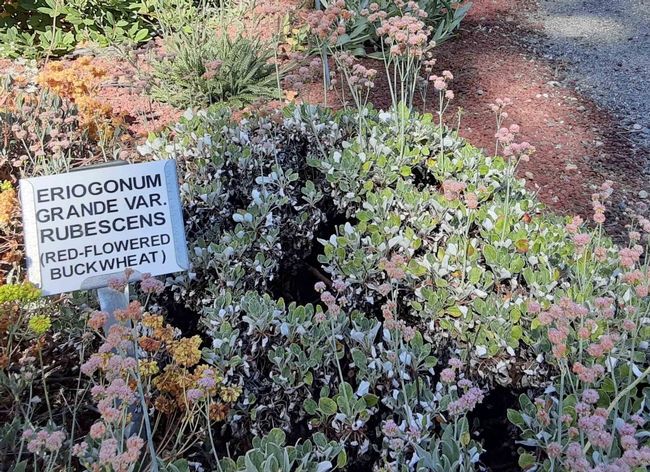
Which brings us to the fact that grande is an odd name for a species known for its neat and petite growth habit, and which spreads neither quickly nor very far. (Maybe this is why a certain coffee chain got the idea to name its smallest coffee size “grande?”)
The best thing about planting long-flowering natives in your yard is the sheer volume of bees and butterflies that will visit to feed. That, their low water needs, and signature frilly blooms make wild buckwheats a choice addition to your native, drought-resistant garden.
I hope this peek into a few of the many wild buckwheat species will entice you to plant some in your garden. Please be sure to check the Calflora website for photos of each of the 256 wild buckwheat species.
The UC Master Gardeners of Butte County are part of the University of California Cooperative Extension (UCCE) system. To learn more about us and our upcoming events, and for help with gardening in our area, visit our website. If you have a gardening question or problem, email the Hotline at mgbutte@ucanr.edu (preferred) or call (530) 538-7201.